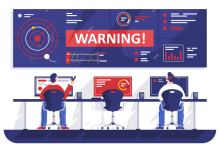
Look up “hasty” and you will find synonyms that convey speed and quickness next to others with less flattering connotations: injudicious, thoughtless, impulsive, and rash. The latter will not earn you a spot in the Contact Center Hall of Fame.
In this fast-paced era, doing things right doesn’t have to mean slow. In fact, a little planning can help you move at a good pace while still delivering business value. After all, that’s why you are investing in something new, right?! Whether it’s a technology upgrade, rip and replace, or specific new capabilities, we’ve got some tips to help you succeed.
Start with a Little Planning
A typical project charter will identify the stakeholders and project team, the roles and responsibilities of each, and the scope and objectives. As you target the “big three” goals of service improvements, cost reductions (or containment), and sales/revenue increases, use outcomes such as improved self-service, reduced volume, faster handle time, cSat gains, and higher close rate to make those platitudes tangible.
Consider what you are going to do differently this time, and what you will achieve (and/or what business problem(s) you are solving). In particular, define changes to processes, new workflows and call flows, new/improved user interfaces, etc. Establish success metrics that enable you to monitor progress toward goals after implementation. These steps give the means to demonstrate value in the implementation, increasing your credibility for future requests.
Define Phases
With speed as a driver, phasing can help you get something done sooner, while not losing sight of the overall goals. A manageable first phase lets you get an early win, ideally having a noticeable impact. You may slice phasing by groups, customer subsets, application areas, channels, phone numbers, etc. Look at what you can readily carve out without overcomplicating the rest of the implementation.
Keep in mind that the lack of a “big bang” cutover of everyone and everything at once can have ripple effects into routing segmentation, network requirements, integration, functionality offered to customers, etc. Decide what level of design and integration you will tackle early. See if you can make an impact on the customer experience as well as the agent experience, building goodwill for the additional changes to come, and gaining important insights to tuning as you roll out. Subsequent phases should then follow quickly so you can maintain momentum and keep resources assigned and focused—both internally and with your vendor/VAR.
Test—Yes, Test!
Define a targeted set of test cases that address the main changes and ensure the users (internal and external) will have a good experience day one. Testing is particularly important for things like menus and call routing, but its importance extends to anything that is important to your operation (e.g., reports and recordings).
Depending on the source of your network and how much is changing, verifying connectivity and performance can be critical as well. Examples of where it may be important include multisite, new connectivity to a cloud solution, or big changes to load burden, and therefore capacity demands on your existing LAN and/or WAN (e.g., first migration to VoIP, changing overall architecture). SIP is another example of an impactful network change that warrants testing.
Define appropriate test types: User Acceptance Testing (UAT) and System Integration Testing (SIT) at a minimum, with the possibilities of load and/or failure/recovery testing (depending on your situation/application/industry), and usability if you are doing something dramatically new for your customer interface (such as speech recognition or bots).
Craft appropriate test cases, with associated inputs, expected outputs, tester instructions, and the tools and database to capture outcomes. These plans should equip the team to conduct the tests, capture results in a formal manner, validate issues, troubleshoot, and resolve (hopefully!). Then, retesting must ensure all issues are resolved and that no new issues have surfaced as a function of changes made.
Speedy Success
In today’s world, we recognize centers need to be agile and move fast. Cloud technology reinforces—and enables—this message. People want to implement contact center technology relatively quickly, but they also want positive outcomes with tangible benefits for customers, the center, and/or the company. You can find rapid success, but don’t ignore the goals and metrics, the realities of technology complexity, and the critical role people and process changes play in making that new technology shine.



